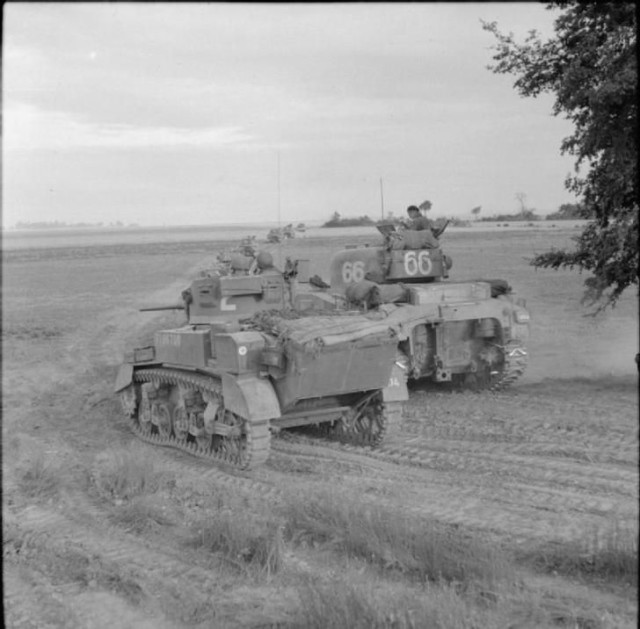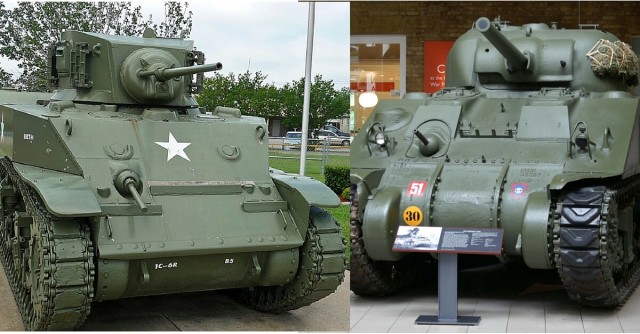IHS Jane’s 360 has recently reported that Paraguay is to return their M3 Stuart light tanks to service and maintain their M4 Sherman main battle tanks. These tanks are over 75 years old and positively antique in the world of modern armed warfare.
The M3 Stuart is an American-built light tank used by the Allied forces during WW II. The name Stuart was given to the tank by the British forces after Confederate General JEB Stuart though the Americans simply knew the tank as the Light Tank M3. The Brits also called them ‘Honey,’ reputedly after one driver quipped, “She’s a honey.”
These tanks saw service throughout the theaters of the war, and their reputation for reliability made them extremely popular with the British forces in spite of their limited fuel range. They were usually retained for reconnaissance work and not used in tank-to-tank combat, as the British were concerned about their light armor.
The tanks were also used by the Russians, but they were extremely unpopular in the east. They were considered to have had too many flaws, such as the armor was too light, the weapons were not substantial enough, it was liable to catch fire, and the biggest issue was the fact that the M3’s radial engine was the same that was fitted into aircraft, and thus required high-octane fuel. This made the logistics of transporting this fuel, in addition to normal diesel fuel, a major headache for the Russians.
Compared to similar armored vehicles of the time, the M3 had much narrower tracks, which made it susceptible to getting stuck in the mud or the snow, both commodities that are freely available in Russia for ten months of the year!
The M4 Sherman was distributed in the thousands by the Americans during WW II to the Allied forces and the Russians. The designers punted that the tanks had durability, middleweight, and size, a limited number of variations, so the parts and spares were standardized, and they were easy to produce. This tank took point on many of the major offensives launched by the Allied and Russian forces from 1942 onwards.
The name ‘Sherman’ again was given by the British and came from the Civil War General, William Sherman. The M4 was the first armored vehicle to carry a gyroscopically stabilized gun and sight. This device only worked vertically and could not automatically slew the turret.
It was very unreliable when driving over uneven terrain, and many gunners felt that it was only helpful in that when the tank stopped to fire, the gun would be pointing in roughly the right direction. This certainly didn’t do an awful lot for initial accuracy. Since WW II, this tank has seen service in some fifty countries around the world, a testament to its usability.
Where did Paraguay get their tanks, considering they did not take part in WW II? In 1970, Brazil donated a total of fifteen M3’s to Paraguay. The tanks were initially attached to Cavalry Regiment N°3 (Regimiento de Caballería N°3: RC3), which was based near the capital, Asuncion.
They made a brief appearance as part of the 1989 coup d’état that resulted in the overthrow of the Paraguayan President, General Alfredo Stroessner. They were then mothballed and only took part in parades, but in recent years, the Paraguayan army has been trying to bring them back into active service.
The M4’s were delivered from Argentina in 1980 and since their delivery, they have been stationed with the Presidential Escort Regiment (Regimiento Escolta Presidencial: REP).

IHS Jane’s was told that in 2013 the Paraguayan army had decided to reorganize the Regimiento de Caballería N°4 (RC4) into a training school for armored vehicles. Following this decision, they brought ten of the original M3’s out of mothballs and put them through a complete refurbishment before delivering them to the new training facility. Their engines were overhauled, the bodies were refurbished and repainted, and their weapons were upgraded to the M2 .50-calibre machine gun.
As far as can be determined the M4 still serves with the Presidential Guard. This still begs the question of how the Paraguayans believe this is going to be of benefit. These tanks were nearly obsolete at the end of WW II, when the German Tigers and Panthers were superior, not to mention the modern armored vehicles available through the arms market of the 21st Century.
State-of-the-art tanks have a plethora of electronics and other mechanical wizardry available to make driving, aiming, shooting and escaping possible in this modern era, meaning that a new graduate from RC4 would be as useful at driving one as the clerk from the ordinance store would be.
Training seems to be an unlikely scenario for these vehicles, so one needs to look elsewhere for a use for them. Paraguay is a third world country with extremely limited resources, so using what they have at hand makes economic sense, and the cost of new tanks would be prohibitive to a country that is trying to uplift the living standards of its population.
Needless to say, the purchase of this type of hardware would be extremely unpopular with the general population as Paraguay faces no serious security threats and has very stable neighbors in Brazil, Argentina, and Bolivia. The terrain of Paraguay would indeed lend itself to tanks, as it is largely flat grassland with some hilly and forested areas.
The largest threats to the Paraguayan government would come from civil unrest. Throughout 2014 there were numerous protests launched by civil society groups; demonstrations were held by workers demanding better-working conditions and salaries, and demonstrations against government policies such as bus fare increases were known.
While most demonstrations are peaceful and coordinated by the police, there have been violent demonstrations. There was one by landless peasants that turned violent and killed eleven demonstrators and six policemen. Perhaps this is the most likely scenario for these refurbished tanks.
Their age would be of no hindrance when used to block a road or to intimidate an unruly crowd. They could be used as a forward command or communications base for managing a violent demonstration.
Whatever the nation uses these vehicles for, it is refreshing to see that a country with limited resources is using what it has, irrespective of age. In the context of the current conditions within the country, one would guess, this level of technology is perfectly acceptable.

